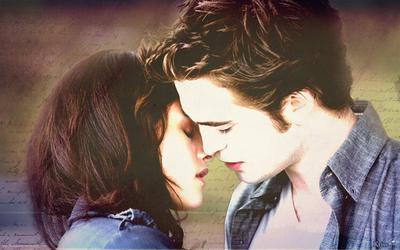|
Are Young Adult Series Good For Young Love?

The young adult genre of literature has always been a somewhat difficult one to define, as certain books can fall into multiple categories at the same time. For instance, some may consider the Harry Potter series to epitomize the young adult label, and others would argue that it's a series suited to most any age group. But in the past 10 or 15 years, there's a sort of sub-genre that has grown immensely popular with teens and young adults: adventures and fantasies intertwined closely with romance.
To be clear, this is far from being a new sub-genre. But never before have we seen the explosive popularity that novels in this category enjoy today. From Twilight to Divergent, Hunger Games to 50 Shades, teens and young adults are obsessively consuming romantic fantasies. But are these books teaching good lessons about young romance? Let's consider some of their main messages.
Perhaps the biggest positive that can be pointed to in at least a number of the popular books these days is the trend of strong female characters with men competing for their affection. We see this in the Twilight series, throughout the Hunger Games saga, and to some extent even in the Harry Potter books. This is by no means to suggest that all young people should be taught that men are meant to fight over the women they like. Rather, it's simply that the love triangles we so often see generally convey a message of distinguishing between lust and love, attraction and devotion. Strong female characters demand that male characters work toward a real connection, rather than simply chase a target. The result, in many young adult romances, is that relationships convey fairly strong and appropriate values as to the foundation of love.
Then again, not every young adult series works this way. While it's appropriate to point to Bella from Twilight as one of many examples of a strong female protagonist in a love triangle, the Twilight series has also been called out by some sources as one that props up the idea of obsessive attraction. Time Magazine wrote a lengthy exploration of this idea, communicating the somewhat tongue-in-cheek idea of female readers leaving their husbands to make pilgrimages in search of their own Edward Cullens. This, as the article acknowledges, is a bit of a joke, but it does recall the "Team Edward" or "Team Jacob" craze that existed with many readers when Twilight first became popular. It seems that even when characters work for one another's affection, there's also the risk that the process involved teaches readers that it can be normal, or even beneficial, to obsess.
Still other stories popular with young adults take the idea of obsession somewhat further, with the chief example undoubtedly being the 50 Shades Of Grey series. Whether or not these books are meant for young adults is debatable. However, whether because they originated as Twilight fan fiction or simply because of their appeal, they've become wildly popular with teens and young adults alike. And while there are plenty of positive messages about sexual exploration and confidence mixed in, obsession and possession are emphasized as well.
Naturally, these themes made a recent comeback with the release of the 50 Shades Of Grey film, though the film itself received a poor critical response, as seen at Rotten Tomatoes. Some even suggest that the plot was dull enough that only the few explicit sex scenes were worth the audience's time. Meanwhile, the fictional series has spawned a very real movement in actual sexual practices among fans. Adam and Eve, known for its wide selection of adult toys and bedroom material, even offers a full line of 50 Shades-branded toys, mostly geared toward bondage play. These toys, which use excerpts from the books as selling points, are probably the most tangible influences being exerted on young people through romance fiction.
But through all of these themes and influences, some good and some bad, the prevailing message of the majority of modern young adult romantic fiction is the simple, timeless message that love conquers all. Naturally, there are examples where this theme is not present, because not every story is the same. One could argue (and many do) that Harry Potter's key characters end up with the wrong romantic connections. "Love conquers all" is a dubious explanation for 50 Shades' resolutions. And even in The Hunger Games, those looking at things from Gale's perspective would beg to differ with the theme. But for the most part, these stories—most of which take place in fantasy realms or dystopian futures rife with conflict—feature love-centered narratives that withstand obstacles and endure against the odds.
That may not seem like an original, or even particularly impactful theme. But in the hands of droves of readers aged 15-30, it's certainly not a bad idea to convey.
Click here to post comments
Join in and write your own page! It's easy to do. How? Simply click here to return to Great Romance Ideas.
|

Are you an Incurable Romantic? You can link to this page and start Sharing the Romance today! Hide linking details
Feel free to link to this page from your own website, blog, or e-mails. Here is a sample link for this page:
To create the above link, copy the text in the box below and paste onto your web page:
Thanks for linking to us! Remember, Life can be a Honeymoon. Let's Start NOW!
Link generation code courtesy of and copyrighted by Green Energy Efficient Homes.
|

SUBSCRIBE TO
Romantic Moments
A Periodic Ezine of Original Short and Romantic Vignettes
|








